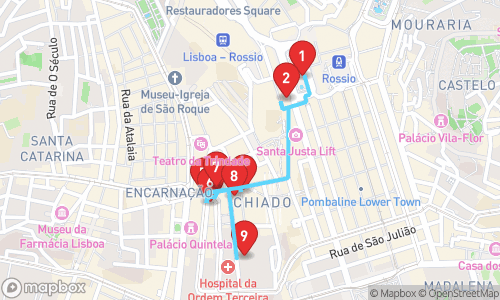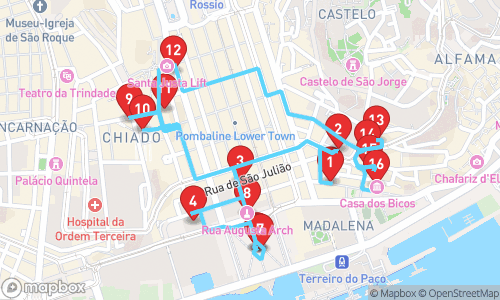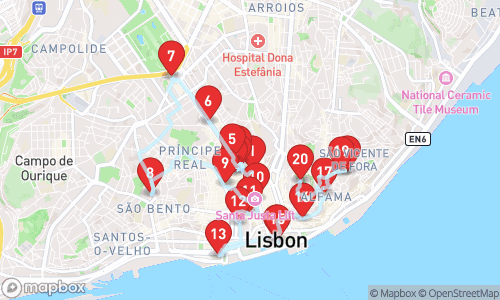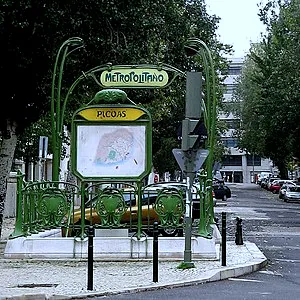


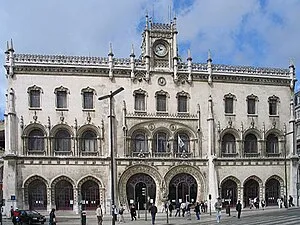
Lisboa Unveiled: A Journey Through Time

Tour Guide
Ryan Multilingual
Welcome to Lisboa! On this GPS guided audio tour, we will visit 20 stops on a route of 7.17km. This tour focusses mainly on general tourism.
Locatello is an app where you can generate personal audio guided tours. Set your preferred distance, guide, language and theme, and a guided tour is created on the spot.
Walking Time
Distance
stops
Language
Tour Stops

Picoas
A metro station part of the Yellow Line of the Lisbon Metro network, opened in 1959.

Restauradores Square
A historic square dedicated to the restoration of Portugal's independence in 1640, featuring an obelisk with names and dates of battles fought during the Portuguese Restoration War and surrounded by 19th and early 20th century buildings.

Restauradores
A historic metro station in Lisbon, one of the original 11 stations on the network, opened on December 29, 1959, connecting to Rossio Railway Station and featuring architectural designs by Falcão e Cunha, Benoliel de Carvalho, and Sanchez Jorge.

Rossio railway station
A cultural heritage site, Rossio Railway Station is a historic railway station in Lisbon, Portugal, designed in Neomanueline style and built between 1886 and 1887.
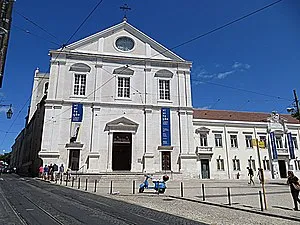
Igreja de São Roque
A Jesuit church featuring a Baroque-style chancel with intricate carvings, gilding, and upholstery, including a notable altar piece with statues of the Society's founders and saints, and a throne for exhibiting the Holy Sacrament.
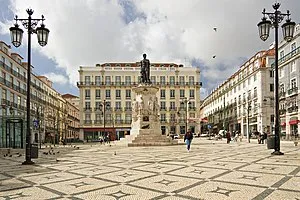
Luís de Camões Square
A central square in Lissabon's city centre, Praça Luís de Camões is a hub connecting Bairro Alto and Chiado. At its core stands a statue paying tribute to Portugal's national poet, Luís de Camões.
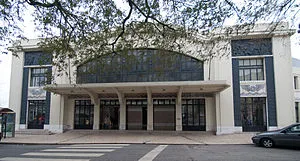
Cais do Sodré railway station
A harbour railway station that serves as the terminus of the suburban route to Cascais, featuring an inter-modal exchange connecting the Lisbon Metro, rail-lines, and river terminal centre.
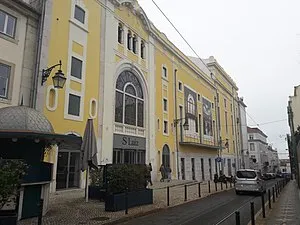
Teatro São Luiz
A historic theatre in Lisbon, Teatro São Luiz, opened in 1894 with a French-inspired design and interior decorations, initially named Teatro Dona Amélia in honor of the Queen of Portugal.
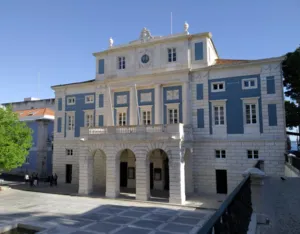
Teatro Nacional de São Carlos
A historic opera house in Lisbon, Portugal, the Teatro Nacional de São Carlos features neoclassical and rococo elements, with a seating capacity of 844 seats.
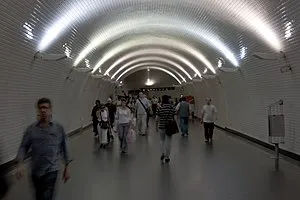
Baixa-Chiado
A major interchange station in Lisbon, Baixa-Chiado connects the Blue and Green Lines of the Lisbon Metro. Designed by Álvaro Siza Vieira, the station opened in 1998 and serves as a hub for commuters.

Santa Justa Lift
A monumental elevator in Lisbon, connecting the lower streets of Baixa to the higher Largo do Carmo, offering panoramic views of the city.
Audio Preview
30 sec
Lisbon Baixa
A historic neighborhood in Lisbon's city center, the Baixa, also known as Baixa Pombalina, is a grid of streets rebuilt after the 1755 Lisbon earthquake, featuring earthquake-resistant architecture and notable landmarks like the Praça do Comércio and Avenida da Liberdade.
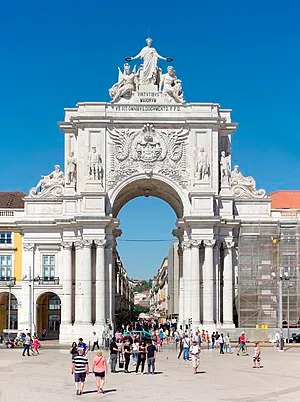
Rua Augusta Arch
A stone memorial arch built to commemorate Lisbon's reconstruction after the 1755 earthquake, adorned with statues of historical figures, featuring allegorical groups and coat of arms of Portugal.
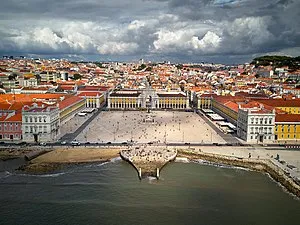
Praça do Comércio
A cultural heritage site, Praça do Comércio is a large, harbour-facing square in Lisbon, Portugal, with a rich history dating back to the 16th century.
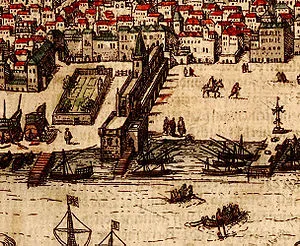
Ribeira Palace
A palace in Lisbon, Portugal, built from 1498 to 1510 during the Manueline era, featuring Manueline architectural style, known for its Portuguese Renaissance design, ship-inspired ornaments, and intricate stone carvings.
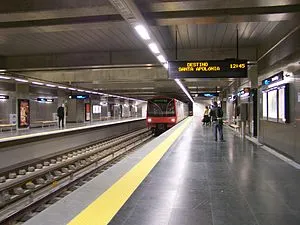
Terreiro do Paço station
A underground metro station in Lisbon, opened on December 19, 2007, in conjunction with the Santa Apolónia station, it's part of the Blue Line and designed by Artur Rosa.
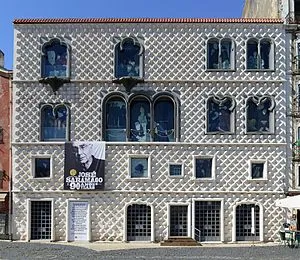
Casa dos Bicos
A 16th-century Portuguese cultural heritage site, Casa dos Bicos is a Manueline-style building featuring diamond-shaped protrusions, irregular fenestrations, and a tiled roof.
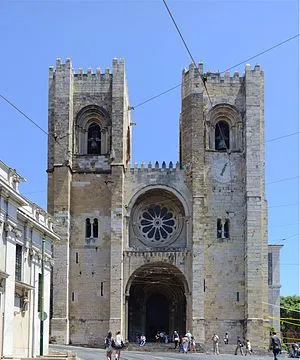
Lisbon Cathedral
A Roman Catholic cathedral, the oldest church in Lisbon, built in 1147, with a mix of architectural styles from Romanesque, Gothic, and Baroque periods, classified as a National Monument since 1910.
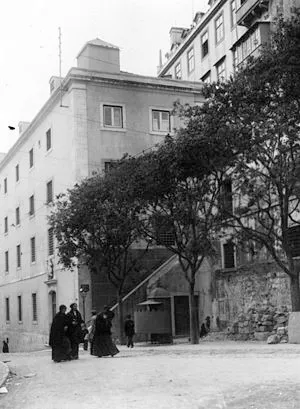
Cadeia do Aljube
A former prison turned museum, Cadeia do Aljube housed political prisoners, common criminals, and ecclesiastical convicts between 1820 and 1965. It now serves as a museum, showcasing the history of the Portuguese Resistance and Liberty.
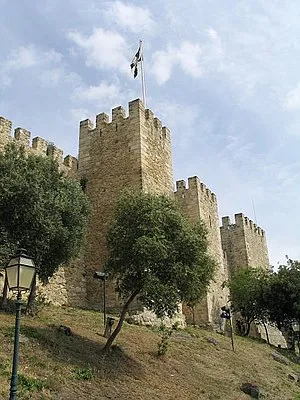
São Jorge Castle
A historic castle in Lisbon, São Jorge Castle has been a cultural heritage site since the 8th century BC, playing a significant role in the city's history, serving as a royal palace, military barracks, and national monument and museum.
Download App
Experience this tour and many more with our mobile app. Available for iOS and Android.
Audio Preview
Tour Map

Quick Facts
- ✓GPS-guided navigation
- ✓Professional audio narration
- ✓Offline maps available
- ✓Premium content included
Why Choose This Tour
Expert Local Guide
Narrated by Jenny Multilingual, specializing in general tourism
Flexible Timing
Take the tour at your own pace, any time of day
